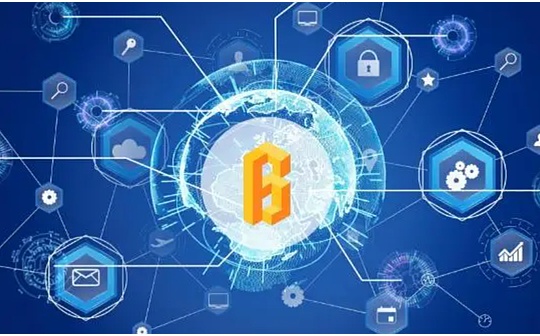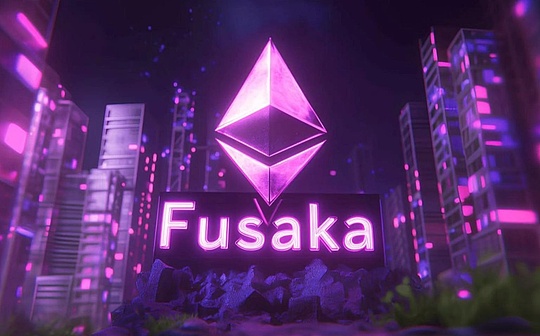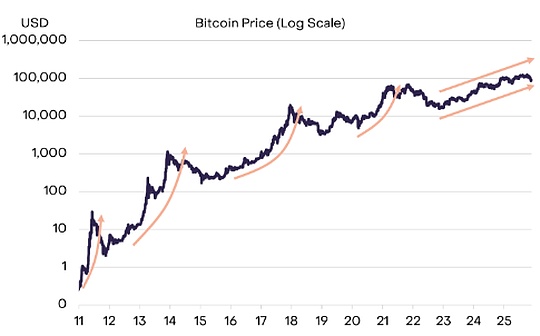
Author: Jean-Paul Faraj Source: Bankless Translation: Shan Oppa, Bitchain Vision
Bitcoin has been the cornerstone of the crypto ecosystem for more than a decade – praised for its decentralization, censorship resistance and proven scarcity.However, despite its dominant market capitalization and has been sought after recently,Bitcoin is still largely disconnected from one of the most active areas in the crypto space: DeFi (decentralized finance).
According to Bitcoin Layers, only about $30 billion of BTC (only 1.875% of its total supply) is used in DeFi.By comparison, Ethereum locks in about $50 billion in ETH in DeFi, accounting for about 23% of its supply.
This difference highlights the core contradictions of today’s Bitcoin narrative:Although BTC has great value, relatively few BTC are actively used on the chain toProvide profit opportunities.This gap is driving a wave of innovation around packaging, staking and other approaches aimed at bringing Bitcoin into the DeFi economy and unlocking the way that makes BTC a productive capital asset.

Bitcoin Layers: BTC supply by network, displaying all encapsulated BTC
Ethereum’s DeFi ecosystem has exploded, with tools such as lending, pledging and trading emerging.In contrast, the productive use of native Bitcoin remains difficult, especially for new users.Transactions are slow, fees are volatile and often high, and Bitcoin’s architecture lacks programmability to support Ethereum applications.
As the broader cryptosphere matures, this raises an important question: Can Bitcoin participate meaningfully in the on-chain economy?If so, how can we get the average BTC holder to join in without forcing them to go through bridges, encapsulated tokens and unfamiliar applications?
Question: Bitcoin’s design and the practicality of DeFi
Bitcoin is not built for the expressiveness of smart contracts we understand today.It prioritizes security and decentralization over expressiveness through Proof of Work (PoW), which makes it a robust store of value – but has less applicability in smart contracts or complex DeFi applications.As a result, native Bitcoin is largely excluded from the thriving composable financial ecosystem on chains such as Ethereum or Solana.
Historically, there are some workarounds:
-
Wrapped Bitcoin:Users convert BTC to ERC-20 tokens to access Ethereum-based DeFi.This brings custody risks, as token liquidity may be opaque and is not always supported by third-party custodians at a 1:1 ratio.
-
Bridge Protocols:Cross-chain platforms allow the transfer of BTC to other ecosystems.But manual bridging increases friction, complexity and risk – especially for non-technical users.
-
Custodial Platforms:Centralized services such as Coinbase provide BTC gains, but require users to give up custody and usually pay returns in points, stablecoins, or proprietary tokens instead of BTC.
Each option comes with tradeoffs challenging Bitcoin’s core philosophy: security, simplicity, and user sovereignty.
The entry threshold: Why user experience still matters

Accumulation of BTC in 2024, river.com
For Bitcoin holders who are curious about how to better utilize their assets (earning income, participating in on-chain governance, or trying DeFi), the approach to the entry remains fragmented, unintuitive and often daunting.Although the infrastructure is mature, the user experience is still lagging behind, and competitors are not just other blockchains, but also traditional finance (TradFi).
This friction creates a major entry barrier.Most users don’t want to be veteran DeFi users—they want simple, secure ways to increase their net worth and BTC holdings without having to shuttle through mazes of applications, bridges and protocols like most Bitcoin buyers who have recently made off-chain purchases through products like brokers, ETFs and Michael Saylor’s Strategy.
In order to bring the next wave of users onto the chain, rather than just being off-chain holders, tools need to abstract this complexity without sacrificing control, self-hosting or transparency.This is where emerging protocols and modern wallet experiences start to really work – providing user-friendly access to basic DeFi functionality while keeping Bitcoin’s core philosophy unchanged.
A better user experience is not just the icing on the cake, it is the critical infrastructure adopted by Bitcoin in the next phase.
New approach to on-chain BTC revenue and productivity
Many emerging solutions are designed to make Bitcoin easier to use in DeFi – each has different focus on trade-offs:
1. Pledge, re-pled and points-based earnings plans
Platforms like Babylon and Lombard now offer Bitcoin-related earnings plans through points or reward tokens, usually achieved through staking/re-staking, which can often be redeemed for privileges or future airdrops.These systems are attractive to early adopters and cryptocurrency native users who chase airdrops and platform-specific token economics.These products usually include BTC standards that convert BTC to packages, and then lock assets into various plans/products to earn floating returns.High returns are available for traders who are proficient in on-chain trading, but this requires a deeper understanding of how to use cryptocurrencies, as well as manual bridging, encapsulating and depositing funds.
advantage:
-
Wide range of profit opportunities
-
Usually self-management
shortcoming:
-
Rewards are not paid in BTC
-
Usually lock-up period is required
-
The long-term value of the reward is uncertain
2. Bitcoin Layer 2 and Meta-Protocol
The emerging Layer 2 networks such as Lightning Network, Rootstock (RSK), Alkanes, and Botanix and Starknet are bringing new capabilities, programmability and speed to Bitcoin.These innovations enable use cases such as fast payments, NFTs and smart contract-like behaviors.Therefore, users can now use their BTC to access various DeFi opportunities—such as by locking funds to protect the network, participate in market making, borrow or convert assets into encapsulated BTC standards that support various protocols.As more and more teams build these networks, the Bitcoin-based earnings opportunity ecosystem will continue to expand.
advantage:
-
Extended Bitcoin use cases
-
Consistent with Bitcoin’s architecture
-
There are many ways to earn profits on the chain
shortcoming:
-
Still in a relatively early stage and scattered
-
Need intermediate to advanced understanding to use
-
A large amount of developer resources are required to build most of the functions that already exist on other smart contract chains
3. Smart wallet integration and native BTC benefits
Wallets like Braavos (statement: I work here!) offer features that allow users to earn native BTC gains without manually encapsulating their bitcoins or abandoning custody.Users can invest in BTC directly through their wallet without having to deal with the usual barriers to bridging or using external applications.Complex steps—such as deposit, encapsulation, and bridging—were seamlessly processed in the background, and BTC is deployed into specific DeFi policies.This user-friendly approach is designed to enable BTC benefits for everyone, regardless of their technical background or cryptocurrency experience.
advantage:
-
Earnings are paid in BTC (rather than points or proxy tokens)
-
No manual bridge or third-party hosting required
-
Default self-hosting
-
Beginner friendly
shortcoming:
-
Rely on converting to encapsulation BTC
-
Need to have some trust in the bridging mechanism and income protocol infrastructure
Macro perspective: Bitcoin’s ever-evolving role on the chain
Bitcoin’s narrative has long revolved around “store of value” – a role it reliably fulfills.But as the on-chain economy develops, the pressure to integrate Bitcoin into this emerging financial system and fulfill its commitment as a reliable payment infrastructure is growing.
To do this without sacrificing decentralization or user trust, new infrastructure must make these opportunities accessible without the need for technical expertise or abandoning the core principles of Bitcoin.
This means:
-
Earnings should be paid in BTC first, rather than derivative assets
-
The custody rights must be retained in the hands of the user
-
Complexity must be abstracted, not transferred to users
Braavos, Lombard, Babylon, and other products mentioned in this article are examples of how these ideas are implemented.Whether it’s giving users a profit through staking or embedding Bitcoin support directly into self-custody options and automating the complexity behind it, they make DeFi easier for Bitcoin holders to use — without them leaving the Bitcoin ecosystem altogether.
Closing the gap carefully
The shift in Bitcoin to an on-chain economy won’t happen overnight—and it shouldn’t be.Prudence, simplicity and self-sovereignty are the foundation of the Bitcoin philosophy.But as more tools to respect these values and provide new features emerge, BTC’s role in the wider crypto economy is evolving.
The challenge now is to build an open, secure and most importantly – easy to access system.If the next batch of billion users will be added through Bitcoin, they will need an experience that can meet their existing needs and be accepted by a wider user base.








